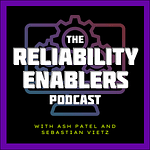Sebastian and I continue our breakdown of notable passages from Chapter 1 of Google's Site Reliability Engineering (2016) book by Betsy Beyer, Jennifer Pettof, Niall Murphy, et al.
We covered passages like:
Monitoring is one of the primary means by which service owners keep track of a system's health and availability.
Efficient use of resources is important anytime a service cares about money.
Humans add latency, even if a given system experiences more actual failures. A system that can avoid emergencies that require human intervention will have higher availability than a system that requires hands on intervention.
SRE has found that roughly, 70 percent of outages are due to changes in a live system. Best practices in this domain use automation to accomplish implementing progressive rollouts.
Demand forecasting and capacity planning can be viewed as ensuring that there is sufficient capacity and redundancy to serve projected future demand, the required availability.








